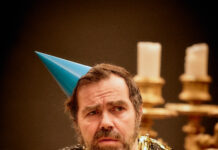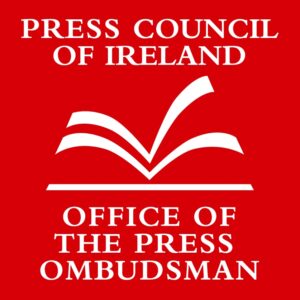IN LATE September 1828, Limerick was filled with excitement as news spread that a visiting prince was on his way.
This prince, originally known as Count Hermann Pückler, was later bestowed with the extravagant name Prince Hermann Ludwig Heinrich von Pückler-Muskau.
Prince Hermann was born on October 30, 1785. In 1817, he married Lucie von Pappenheim, the daughter of Prince Karl August von Hardenberg. It was following the death of his father-in-law in 1822 that he acquired the title of prince.
Although they remained friends for years to come, his marriage to Lucie was dissolved in 1826. By 1828, he was on the search for a wealthy second wife to help fund his follies.
His plan to find his new, and wealthy, wife involved embarking on a grand tour of Ireland and England.
He arrived in Dublin on August 11, 1828, for his state-wide excursion through Ireland. His second stop was Galway, which he found ‘uncivilised’. Observing how the local people lived, he likened them to savages.
From Galway, he travelled to Limerick where he stayed at Moriarty’s Hotel for a number of days.
The Moriarty Hotel was located at 7 George’s Street (now O’Connell Street) and owned by Eliza Moriarty. At the time, this hotel was used as a meeting place for the local Masonic Lodge. It was also a favourite of Daniel O’Connell, the Liberator, an acquaintance of the prince. It is even possible that the Prince stayed there on his recommendation.
O’Connell had only two months prior to the prince’s arrival in Limerick been elected to his first governmental position as a Member of Parliament for Clare. He was the first Catholic to be returned in a parliamentary election since 1688.
Prince Hermann was a skilled landscape gardener and gained recognition for his autobiographical books about his extensive travels in Europe and Northern Africa, published under the pen name “Semilasso”.
His talent for writing was evident in his vivid description of Limerick during his stay.
The royal was in admiration of the city calling it the “kind of cities I like, old and venerable, adorned with Gothic churches and moss-covered ruins; with dark narrow streets, and curious houses of various dates; a broad river flowing through its whole length, and crossed by several antique bridges; lastly, a busy market-place, and cheerful environs.”
“Such a city has for me a charm like that of a wood, whose dark branches, now low, now high, afford sylvan streets of various forms, and frequently over-arch the way like a Gothic roof. Modern regular cities are like a trimly cut French garden: they do not suit my romantic taste.”
It was noted in the local press noted that Prince Hermann visited all the public institutions and various places of worship. He walked across the Shannon River at Thomond Bridge (Sarsfield Bridge was yet to be built).
While on the Clare side of the city, he visited the Treaty Stone – which was yet to be raised on a pedestal. Instead, it lay on the road and was often used as a mounting point for horse riders.
While at the Treaty Stone, he was mistaken for the son of Napoleon by some gathered locals, who began to let out a cheer of “Long life to Napoleon!”
In response, he laughed and stated: “You joke! I am at least 10 years too old to be the son of the great emperor and the beautiful princess.”
Although he was fond of the architecture in the old city, he was less impressed by the influence of religion in the city. While out for a walk, he began to feel unwell and made his way back to the Moriarty Hotel. There he was met by a sexton of one of the Catholic Churches, who informed him that they rang the church bells on hearing of his arrival. This deed went unnoticed by the price but the sexton still hoped that “I would give them ten shillings as a gratuity”, he wrote.
It was not just the Catholic clergy that came begging. Later, he encountered a member of the Protestant Church who tried to caution him “against the impositions of the Catholics, who annoy strangers in the most shameless manner”, while in the same breath asking him for a small contribution to the Protestant poor-house.
The path to the Moriarty Hotel was well worn over the prince’s visit as, along with clergy, members of social clubs – including the Limerick Independent Club – and of the Order of Liberators visited him there. The former conferred an honorary membership of the club on the Prince. They also invited him to a public dinner, but he could not attend as he had a prior engagement to meet with Daniel O’Connell at his home in Kerry.
Though the prince’s quest for a wife during his travels through England and Ireland proved ultimately unsuccessful, he still got to enjoy the views. He returned to mainland Europe where he is remembered for his elaborate gardens, writings, charismatic presence, and even an ice cream named after him in Germany.
Today we know this vanilla, chocolate, and strawberry ice cream as a Neapolitan, but the first recorded recipe was created by head chef of the royal Prussian household Louis Ferdinand Jungius in 1839, who dedicated it to the wandering Prince Hermann.











